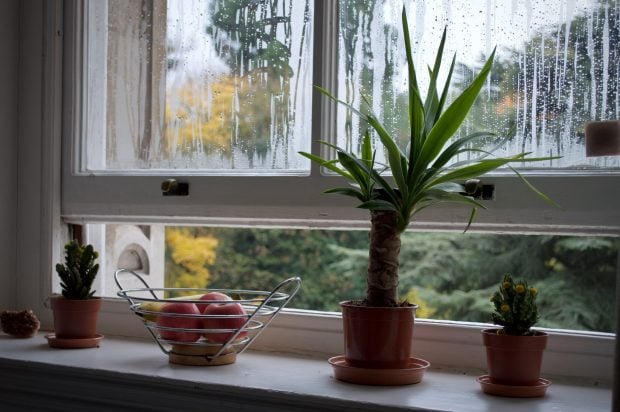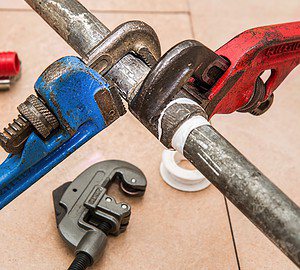
Most people associate pollution with the contamination of the outdoor environment due to the release of harmful substances which contribute to smog, such as industrial and motor vehicle emissions containing greenhouse gases like methane and nitrous oxide.
However, according to the Environmental Protection Agency (EPA), the indoor air quality in many homes and places of business contains a concentration of pollutants that is up to five times the level of outdoor air. You might be surprised to learn many factors can contribute to poor air quality in your home and therefore negatively affect your health and well-being. The main factors in indoor air quality are:
- Chemicals: Indoor air contains a large number of different chemicals which include formaldehyde, carbon monoxide, nitrogen dioxide, benzene, organophosphate pesticides and lead. Tobacco smoke is the leading source of these emissions. Lead from paint still exists in some homes and can be released through dust particles and chipping. The use of insect strips or organophosphate pesticides in cracks and crevices can be harmful when inhaled as well as compounds emitted from the decomposition of materials such as glue used to fasten PVC flooring, which is a major source of phthalates.
- Radon: Outdoor pollutants like radon gas, which is produced from the decay of uranium, can diffuse through soil into homes through cracks in building foundations. When warmed, radon also evaporates from household water into indoor air.
- Particles: Byproducts of combustion from cooking can result in harmful particles being released into the air. Volatile organic compounds (VOCs) from paints and personal care products also contain ultrafine particles which pollute indoor air.
- Microbes: Fungi that contain allergens can develop in damp conditions. Mold growth and mildew are forms of microbial contaminants in a home.
- Pets and Pests: Pets, cockroaches, mice and dust mites are a source of indoor allergens that can contribute to airway diseases, asthma and rhinitis.
It is encouraging to know there are ways you can reduce your exposure to this multitude of pollutants and keep the air quality in your home clean and healthy. In this article, we will explore some of the ways you can do this.
Clean Your Air
An air-cleaning device is one of the most effective ways to reduce airborne pollutants in your home. This can be achieved by installing a heating, ventilation and air conditioning (HVAC) system which can eliminate most indoor pollutants and odors. This is achieved by filtering contaminants or pollutants out of the air as it passes through the air filter within the HVAC unit, thereby improving the quality of your indoor air and reducing allergens.
An air purifier can be beneficial when ventilation with outdoor air is not possible. Air purifiers can sanitize the air in your home and are generally more effective in killing viruses, bacteria and microbes such as mold, while air filters are better at capturing airborne particles like pet dander and dust. The main types of air purifiers are:
For optimal results, make sure to replace your air filters every 30 to 60 days as this will prevent the build up of dirt, debris and other pollutants which can contaminate your indoor air.
Ventilation
Improve the airflow and ventilation in your home by regularly opening your windows to let in air from outside. Like humans, homes need to breathe and proper ventilation can allow fresh air in and release dirty air containing odors, dust, gases and other airborne pollutants. This will also reduce excess moisture and condensation from your home which can lead to damp and the growth of mold.
It is particularly important to ventilate properly when undertaking activities that release VOCs into the air such as painting and decorating, using cleaning agents, hairsprays or solvents and varnishes.
Remove Mold and Damp
Microbial contaminants such as mold, mildew and fungus can pollute your indoor environment and can grow as a result of excess humidity or moisture in the air.
To prevent this from happening keep your surfaces dry and reduce the chances of damp forming from activities such as cooking, showering and washing clothes. Damp moisture from such activities condenses on surfaces like walls and windows. To reduce the chances of this happening take steps such as hanging your wet clothes outside to dry or using a washer dryer that has an inbuilt tumble dryer. If you do dry wet clothes indoors, make sure to ventilate properly by opening a window to let the water vapor escape or by using a dehumidifier that will remove moisture from your indoor air eliminating condensation and the potential for mold, mildew and dust mites to spawn.
It is advisable to keep the humidity in your home between 30% to 50%. A humidifier can be helpful if you have damp places in your house such as a basement or laundry room.
Indoor Plants
According to NASA’s Clean Air Study, some indoor plants have natural air-cleaning qualities that can bring benefits to your home environment.
For example, English Ivy can capture harmful toxins from the air such as ammonia, benzene, formaldehyde, trichloroethylene and xylene while others such as Dracaena trifasciata or snake plants can purify your home thanks to their unique ability to filter indoor air at night known as Crassulacean Acid Metabolism (CAM). This type of photosynthesis enables snake plants to convert carbon dioxide into oxygen during the night, making them ideal for improving your quality of sleep. Some other houseplants known for their air-purifying qualities include:
- Peace Lily
- Boston fern
- Chinese Evergreen
- Spider plant
- Barberton Daisy
- Dragon Tree
- Bamboo palm
Natural Cleaning Products
As many household cleaning products contain VOCs, greenhouse gases and other toxins that contribute to the pollution in your home, consider switching to more environmentally-friendly products that are naturally made.
Natural astringents such as baking soda, vinegar and lemon juice can act as cleaners and be used for cleaning glass surfaces, mirrors and windows as well as natural descalants for your kettle or coffee machine.
Baking soda has abrasive properties and can be used to naturally dissolve grease instead of dishwashing detergents, as an oven and bathroom cleaner and for removing carpet stains without releasing chemicals into the air.
By following the suggestions in this article, you can greatly reduce indoor pollutants from your home, thereby improving its air quality.



